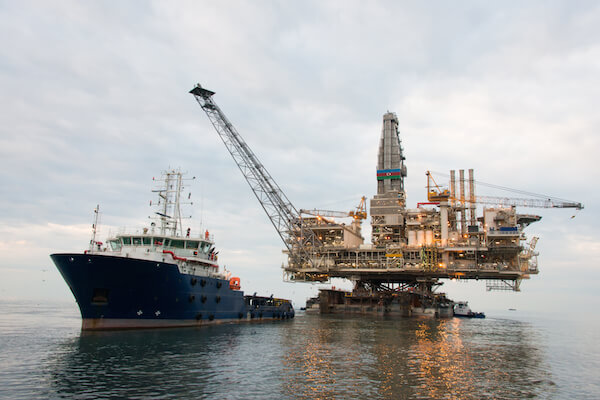Heading into the home stretch before a highly anticipated OPEC meeting in Algiers next week, crude industry experts and non-OPEC members alike are opining on what may happen to crude production.
Dave Pursell, managing director and head of macro research at Tudor, Pickering, Holt & Co. in Houston, told Rigzone the production freeze idea is based largely on optics.
“But, they’re raising expectations that there will be an agreement,” he said. “I think they need to do something, and the challenges are less now than they were earlier this year.”
Oil prices have tumbled from more than $100 per barrel in 2014, as prodigious supply outsized demand. More recently, crude prices have hovered in the low $40s.
As Pursell explained, OPEC members Iraq and Libya can’t produce more oil, anyway, at least in the near term. Iraq needs significant capital investment to move forward, and Libyan production is struggling under the weight of political unrest.
“The reality is the only reason you can get a freeze is because people can’t grow. The only spare capacity in the world sits inside of Saudi Arabia and Libya. That doesn’t mean Iran and Iraq can’t grow over time, and the rest of OPEC can’t grow a little bit over time, but it takes a ton of capital,” he said. “There’s no spare capacity that could easily be brought on.”
Still, Pursell said that even if a production freeze agreement is mostly for show, it’s not meaningless.
“But it’s important ‘show’ in that shows they can agree to something. There’s this notion that OPEC is irrelevant and my argument is that if OPEC is irrelevant, how come I’m talking about them every day? And so if they’re going to eventually have to cut – which we don’t think they will – but if they do, you first have to have an agreement to not increase,” he said. “You have to agree on something, and then if you have to make a harder choice down the road that you have to cut, there’s more confidence that it could actually be implemented.”
Many analysts, including Pursell, have said a cut is unlikely, though. Russia recently said it’s off the table. The nation’s energy minister told UPI there are no proposals to slash crude production. Alexander Novak said one option under review would be to maintain production rates at current levels for the up to six months.
According to a new Reuters’ story anonymous sources have said Saudi Arabia would be willing to cut its crude production if Iran will cap its oil output. Iran has steadfastly said it won’t consider a freeze until it has ramped production back up to pre-sanction levels, but that may soon happen.

Oil prices are depressed, but Texas shale has never been more valuable.
A recent spate of land deals in the sprawling Permian Basin illustrates a counter-intuitive trend: Real estate in the country’s most active oil field is even more expensive today than it was before commodity prices crashed.
QEP Resources Inc. agreed to pay a price that works out to close to $60,000 per net acre in June for a slice of the Permian, in the basin’s priciest land deal on record.
That’s more than double the average $30,000 per net acre explorers paid for Permian land during the first nine months of 2014, when oil topped $100 a barrel, according to data from Citigroup Inc. Oil has been hovering at $45 to $50 per barrel since mid-August.
Over the past few months, at least four other explorers agreed to pay more than $30,000 per net acre to expand in the Permian: Concho Resources Inc., Parsley Energy Inc., SM Energy Co., and Silver Run Acquisition Corp., according to data compiled by Bloomberg.
“The valuations are pretty lofty,” said Bryan Lastrapes, managing director at Moelis & Co. “When you look at the prices being paid for a flowing barrel, they are higher than when oil was at $100.”
Unusual Geography
The obvious question: With oil so much cheaper today, why has Permian land become so pricey? There are a few explanations. The first comes down to the same reason a dingy is more valuable on a sinking ship.
“It’s about scarcity,” said Bruce Cox, global head of energy acquisitions and divestitures with Credit Suisse Group AG.
The Permian is one of the few places in the U.S. where drilling remains profitable amid low prices, thanks to its unusual geography, in which different layers of oil- and gas-soaked rock are stacked like layers in a cake, he said. An explorer can drill multiple horizontal wells after digging straight down.
“What you can’t find in most plays is the Permian hydrocarbon column,” Cox said. “Companies can drill two to four times as many wells over a 10-year development period” in the Permian than in other basins.
QEP Rationale
This is a key part of the rationale QEP used to justify the price it agreed to pay for the 9,400 net acres in the Permian in June.
The company told investors it sees a chance to drill more than 400 horizontal wells along four different benches of shale, more than a half-mile down, where it has already determined there is oil. It sees additional upside potential drilling riskier, wildcat wells on three other benches. So it isn’t buying just one field, but as many as seven.
That deal also addresses a perpetual critique from investors that QEP isn’t big enough in the Permian, by increasing its position there by 50 percent, Richard Doleshek, QEP’s chief financial officer, said in August.
“From a dollar-per-acre standpoint, we heard a lot of conversation about how that was a big number,” Doleshek said during a presentation at an oil and gas conference sponsored by Enercom Inc., according to a transcript compiled by Bloomberg.
“When you look at it on a target basis, it’s relatively reasonable,” he said. “It’s pristine acreage.”
Lower Costs
Another factor driving up Permian land prices is the fact that it has some of the lowest break-even costs in the world. The area has more than a half-dozen fields where drilling can stay profitable even when oil falls below $30 a barrel, according to data compiled by Bloomberg.
The oil rout has set off a land grab for that reason, said Ron Gajdica, co-head of energy acquisitions and divestitures with Citigroup.
“When oil prices were high, there was a high supply of acreage with economic drilling opportunities,” he said. “Now, in a $40 to $50 oil price environment, acreage with economic locations is scarcer. There are only a limited amount of opportunities and many of them are in the Permian.”
A couple of other things are driving up the price of Permian land. First, development costs have come down sharply during the downturn, thanks to lower service costs, technological advances and more efficient techniques, Gajdica said. That means explorers can justify paying higher prices for land.
Second, Wall Street is helping the trend. Publicly traded Permian explorers such as Concho and Parsley trade at a premium to other shale players. They paid for their recent acquisitions with stock. Since their currency is worth more, they can afford to pay up.
In addition, other explorers with operations elsewhere, such as QEP and SM, saw their share prices spike after striking deals in the Permian, which could spur even more dealmaking in the area.
“The market tends to respond favorably when these Permian deals are announced,” Gajdica said.

Robert Gordon University (RGU) in Aberdeen has been awarded funding to create a skills development framework for the oil and gas sector in Mexico.
The framework will provide recommendations on how to address the potential skills gap in the Mexican oil and gas industry over the next 15 years, both at graduate and vocational level. The university secured the funding, which will be delivered by the British Embassy in Mexico, from the British Government’s Prosperity Fund.
As part of the development plan, RGU will advise the Ministry of Energy in Mexico (SENER) on appropriate delivery models to train and further develop the Mexican workforce, and to secure a pipeline of future talent.
Work on the development plan has already begun and the framework will be presented to the Mexican Government in December, an RGU spokesperson told Rigzone. In its plan, RGU is undertaking a review of what the UK has done to develop its skilled workforce and is using that information to advise the Mexican Government.
Although Mexico has a long-standing track record as one of the leading hydrocarbon producing countries in the world, it is estimated that it will require more than 135,000 additional skilled people in the oil and gas industry over the next 15 years in order to meet production targets set by the government.
“The Energy Reform in Mexico presents huge opportunities for the Mexican oil and gas sector,” said Professor Paul de Leeuw, director of RGU’s Oil & Gas Institute.
“RGU is delighted to undertake this important review on behalf of the FCO and to advise the Mexican Government on skills development options for Mexico,” he added.
“As part of the Energy Reform, SENER has developed a coordinated strategic human resource program for the energy sector, seeking to rapidly build capacity to respond to the needs of the transformed energy sector,” said Leonardo Beltran, SENER’s undersecretary for planning and energy transition.
“The partnership with the UK and particularly with RGU will support the development of capacity building of Mexico’s oil and gas sector,” he added.
“We aim to build a strong partnership that promotes an open, robustly-regulated Mexican energy sector with significant British collaboration. The UK is a global centre of energy excellence and we hope our experience can contribute to the successful implementation of Mexico’s new energy markets,” said the British Ambassador to Mexico, Duncan Taylor.
The project builds on the relationship RGU has been developing with SENER following the visit from the President of Mexico, Enrique Peña Nieto and his delegation to the university in March 2015, and builds on the Memorandum of Understanding (MoU) which RGU signed with SENER in September 2015.
This project is funded by the British Embassy in Mexico as part of its Prosperity Fund energy program. This program seeks to support Mexico’s economic development and create commercial opportunities in the energy sector. Through the Prosperity Fund, the British Government has supported Mexico to shape its energy legislation based on international best practices.

The longer OPEC and other producers talk about a ceiling on crude output, the more doubts grow in the market.
Money managers increased wagers on falling prices by the most in three months as a meeting between Russia and Saudi Arabia ended without specific measures to support prices. Producers have pledged to discuss action in Algiers later this month.
“The more they talk, the less people listen,” said Michael D. Cohen, an analyst at Barclays Plc in New York. “If you look at the actual statements from the Saudis, there’s not a lot of enthusiasm. They’re saying that either they don’t believe a substantial intervention is needed right now or that if other producers want a freeze, they’ll go along.”
Saudi Arabia’s Energy Minister Khalid Al-Falih said on Sept. 5 that he’s optimistic producers will agree to cooperate in Algiers. He spoke after meeting with his Russian counterpart, Alexander Novak, at the G-20 summit in China. Novak said that a freeze in production by OPEC and Russia would be the most effective way of stabilizing the market.
The International Energy Forum, including 73 countries that account for about 90 percent of the global supply and demand for oil and natural gas, will meet in the Algerian capital Sept. 26-28. The Organization of Petroleum Exporting Countries will hold informal talks on the sidelines of the gathering.
Parsing Words
“Everyone is sifting for clues on whether OPEC will reach an agreement to limit production or leave it uncapped with the potential for higher output,” said Tim Evans, an energy analyst at Citi Futures Perspective in New York. “At this point we’re waiting for the outcome of the talks. A lot of people are standing to the side while others are building positions with a specific view in mind.”
A freeze deal between OPEC members and other producers was proposed in February. A meeting in April ended with no accord because Iran refused to join, while Saudi Arabia insisted that its rival take part. Iran has said it’s too soon to cap output as it’s still restoring production curbed by sanctions.
Speculators bolstered their short position in West Texas Intermediate crude by 34,954 futures and options during the week ended Sept. 6, according to the Commodity Futures Trading Commission. Bets on rising prices declined.
Prices Drop
WTI futures dropped 3.3 percent to $44.83 a barrel in the report week and prices lost 1.6 percent to $45.15 at 9:18 a.m. New York time.
Futures surged Sept. 8 after the Energy Information Administration reported U.S. crude inventories fell 14.5 million barrels in the week ended Sept. 2, the biggest drop since January 1999. Prices retreated the next day as speculation grew the supply drop was a one-off caused by a tropical storm that disrupted imports and offshore production.
Money managers’ short position in WTI climbed to 130,274 futures and options. Longs fell 1.9 percent. The resulting net-long position dropped 19 percent. Net-long positions in Brent crude decreased by 37,226 contracts, according to ICE Futures Europe.
In other markets, net-bullish bets on gasoline declined 32 percent to 11,148 contracts. Gasoline futures dropped 9.1 percent in the report week. Net-long wagers on U.S. ultra low sulfur diesel tumbled 56 percent to 9,840 contracts. Futures declined 4.3 percent.
Gambling Momentum
“There’s a lot of gambling taking place,” said Stephen Schork, president of the Schork Group Inc., a consulting company in Villanova, Pennsylvania. “A lot of money managers are betting that a bottom has been put in but I’m skeptical.”
U.S. crude stockpiles remain at their highest seasonal level in more than 20 years. Refineries plan maintenance programs for September and October when fuel demand is lower. Over the past five years, refiners’ thirst for oil has dropped an average of 1.2 million barrels a day from July to October.
“The market will probably yo-yo in a range through the maintenance season but there’s downside risk,” Schork said. “If demand isn’t a strong as hoped and crude inventories rise, the market could take another leg lower.”

Mexico’s government on Thursday set out plans for a bigger-than-anticipated cut in public spending in 2017, with struggling state oil company Pemex earmarked for a 100 billion peso ($5.36 billion) reduction in funding.
New Finance Minister Jose Antonio Meade said the budget foresaw planned spending cuts of 239.7 billion pesos ($12.83 billion), targeting a primary surplus of 0.4 percent of gross domestic product (GDP) in 2017. It would be the first such surplus since 2008.
Of the cuts, 100 billion pesos fall on Pemex, which is already facing a funding squeeze and has racked up multi-billion dollar losses for years. Since the government ended its oil and gas monopoly nearly three years ago, Pemex has faced stiff competition from the private sector.
“Pemex is making the biggest contribution to the cuts,” Meade said, presenting the budget proposal to Congress a day after he was sworn in as finance minister following the resignation of Luis Videgaray.
In late 2013, the government threw open the industry to private capital to reverse a protracted slide in oil production, but falling crude prices have undermined those efforts.
Currently running at some 2.16 million barrels per day (bpd), Mexican oil production will slip to an average of 1.928 million bpd in 2017, the budget forecasts. The last time Mexican crude output fell below 2 million bpd was in 1980.
Still, the budget does foresee changes aimed at easing Pemex’s heavy tax load.
Less than two years remain before the next presidential election, and President Enrique Pena Nieto’s government is struggling to ramp up economic growth, having fallen well short of its original ambition to achieve annual rates of 5-6 percent.
Hurt by uneven U.S. demand for its goods, Mexico’s economy shrank in the second quarter for the first time in three years.
Next year, the budget foresees growth of between 2 and 3 percent, compared with 2.0-2.6 percent in 2016.
Despite the 2017 cuts – well above the 175.1 billion the government eyed in April – non-discretionary spending was expected to rise by 144.3 billion pesos, inflated by higher financing costs and a slide in the peso’s value.
Next year the government foresees an overall deficit of 2.9 percent of GDP, 0.6 percentage points less than the 2016 target.
The budget foresaw the peso averaging 18.2 per dollar in 2017, and an average price of $42 per barrel for Mexican crude, in line with the government’s hedging program. ($1 = 18.6600 Mexican pesos)

Seadrill Limited has received a notice of termination from Pemex Exploracion y Servicios for the West Pegasus (UDW semisub) drilling contract, effective Aug. 16. Seadrill has disputed the grounds for termination and is reviewing its legal options.
During the second quarter of 2015 Seadrill signed a provisional commitment for a two year extension to the contract with Pemex for the West Pegasus. In conjunction with the extension, the day rate for the remaining term of the initial contract was reduced. The extension of the contract was finalized during the first quarter of 2016.
As part of this agreement, Seadrill and Seamex Limited, Seadrill’s 50 percent owned joint venture with Fintech, agreed to reduce the day rate on five jack-ups for a period of 365 days. The agreement to reduce the day rates of the existing contracts was contingent upon final confirmation of the two year extension of the West Pegasus by Pemex management.
In the event of termination, Seadrill and Seamex are entitled to recover the day rate concessions as well as the demobilization for the West Pegasus. In addition, Seadrill has stated that it will seek reimbursement of certain costs incurred in anticipation of the extension.

OPEC has done it again.
Talk of a potential deal to freeze output helped push oil close to $50 a barrel and prompted money managers to cut bets on falling prices by the most ever. West Texas Intermediate, the U.S. benchmark, went from a bear to a bull market in less than three weeks.
OPEC is on course to agree to a production freeze because its biggest members are pumping flat-out, said Chakib Khelil, the group’s former president. Saudi Energy Minister Khalid Al-Falih said that the talks may lead to action to stabilize the market.
“This is all courtesy of some very well-timed comments from the Saudi oil minister,” said John Kilduff, partner at Again Capital LLC, a New York hedge fund focused on energy. “They’ve been successful over the last year in jawboning the market, and this is the latest example.”
Hedge funds trimmed their short position in WTI by 56,907 futures and options during the week ended Aug. 16, the most in data going back to 2006, according to the Commodity Futures Trading Commission. Futures rose 8.9 percent to $46.58 a barrel in the report week and closed at $48.52 a barrel on Aug. 19. WTI is up more than 20 percent from its Aug. 2 low, meeting the common definition of a bull market.
“This was a very short market so we were bound to get some covering,” said Stephen Schork, president of the Schork Group Inc., a consulting company in Villanova, Pennsylvania. “You probably won’t hear a lot from OPEC with prices up here, but if we get down to where we were a few weeks ago we can expect to hear more.”
Informal Talks
The Organization of Petroleum Exporting Countries plans to hold informal talks to discuss the market at the International Energy Forum next month in Algiers. Russian Energy Minister Alexander Novak said that the nation was open to discussing a freeze.
Talks to implement a production freeze collapsed in April when Saudi Arabia said it wouldn’t take part without Iranian participation. Iran was restoring exports after sanctions over its nuclear program were lifted in January.
Saudi Arabia, Iran, Iraq and non-member Russia are producing at, or close to, maximum capacity, Khelil said in a Bloomberg Television interview on Aug. 17. Saudi Arabia told OPEC that its production rose to an all-time high of 10.67 million barrels a day in July, according to a report from the group.
Ample Stockpiles
Declining crude and gasoline stockpiles in the U.S. also bolstered the market last week. Crude supplies dropped by 2.51 million barrels as of Aug. 12, Energy Information Administration data show. Gasoline inventories slipped 2.72 million barrels during the period. Stockpiles of both crude and gasoline remain at the highest seasonal levels in decades even after the declines.
“There’s a high level of uncertainty right now, so fairly small news can move the market a lot,” said Michael Lynch, president of Strategic Energy & Economic Research in Winchester, Massachusetts. “It still remains the case that we have a huge surplus of supply and aren’t going to see it disappear anytime soon.”
Money managers’ short position in WTI dropped to 163,232 futures and options. Longs, or bets on rising prices, increased 0.1 percent, while net longs advanced 56 percent, the most since July 2010.
In other markets, net-bearish bets on gasoline climbed 54 percent to 1,970 contracts. Gasoline futures rose 5.7 percent in the report week. Net-long wagers on U.S. ultra low sulfur diesel increased more than fivefold to 10,835 contracts. Futures advanced 9.8 percent.

Mexico started quietly buying contracts to lock in 2017 oil prices when futures were near their peak in June, signaling the start of what has in prior years been the world’s largest sovereign petroleum hedge, according to people familiar with the deal.
The Latin American country bought put options, which give it the right to sell crude at a predetermined price, in June and July, earlier than the usual period of late August to late September, said the people, who asked not to be identified because the process is private.
Brent crude, the global benchmark, peaked at nearly $53 a barrel in early June. Since then, prices have declined about $10 a barrel as the outlook for the global economy soured and OPEC countries boosted production. The people didn’t say how much Mexico was able to hedge before prices fell back.
In response to a list of e-mailed questions, the Mexican Finance Ministry’s press office declined to comment on the status or progress of Mexico’s oil hedge negotiations.
The Latin American country has spent an average of almost $1 billion a year over the past decade buying put options through deals with banks that in the past have included Goldman Sachs Group Inc., Citigroup Inc., JPMorgan Chase & Co., Morgan Stanley, BNP Paribas SA, Barclays Plc and HSBC Holdings Plc, according to government documents. Mexico’s annual hedge is the largest undertaken by a national government and often roils the market.
Mexico and its bankers try to keep the hedge under wraps as long as possible, to avoid others front-running the trade and making the insurance more expensive. In the past two years, however, some details of the hedge emerged because of new regulations introduced in the U.S. with the Dodd-Frank Act.
Dodd-Frank
The rules forced U.S. banks to report some details of the deal through public swap data repositories. But this year not a single deal bearing the marks of the Mexican hedge has emerged, and two of the people familiar with the program said Mexico and its bankers were using non-U.S. branches of the banks to bypass the reporting rules.
The move to hedge 2017 oil prices comes as Mexico stands to take in about $3 billion from this year’s hedge, which was put on from June to August 2015, if prices remain around current levels. That follows last year’s record payout of $6.4 billion.
Despite Mexico’s hedging success — it received $5 billion in 2009 after oil prices plunged — few other commodity-rich countries have followed suit. Ecuador hedged oil sales in 1993, but losses triggered a political storm and the nation never tried again. More recently, oil importers Morocco, Jamaica and Uruguay have bought protection against rising energy prices.

Oil prices hit five-week highs on Monday, gaining about 10 per cent in a three-day rally as speculation intensified over potential producer action to support prices amid a crude glut.
Data from market intelligence firm Genscape estimating a draw of more than 350,000 barrels at the Cushing, Oklahoma delivery point for US crude futures last week added to the bullish sentiment, said traders who saw the data.
Brent crude rose $1.08, or 2.3 per cent, to $48.05 a barrel by 11:07 a.m. EDT (1507 GMT), after rising to $48.10 earlier, its highest since July 7. Brent has gained about 10 per cent cumulatively in the past three sessions, its most in such a stretch since May. Since the start of August, it is up 12 per cent.
US West Texas Intermediate (WTI) crude gained $1.06, or 2.4 per cent, to $45.55, after rallying earlier to $45.61, a peak since July 21. WTI has gained nearly 10 per cent on the month.
Members of the Organization of the Petroleum Exporting Countries are to meet on the sidelines of the International Energy Forum, which groups producers and consumers, in Algeria from Sept. 26-28.
Russian Energy Minister Alexander Novak bolstered hopes on Monday that oil producing nations could take action to stabilise prices, telling a Saudi newspaper that his country was consulting with Saudi Arabia and other producers to achieve market stability.
“With Russia joining the chorus, an array of bullish oil ETFs saw a sizeable influx of capital that lifted crude values by more than $5 a barrel off recent lows,” said Jim Ritterbusch of Chicago-based oil markets consultancy Ritterbusch & Associates.
“While we see very little possibility of an actualization of curtailed OPEC output, there will likely be enough chatter during the next five to six weeks to deter selling in allowing WTI to gravitate at around the $45 area, at least through the second half of this month,” he added.
But other analysts were sceptical that the rally would continue.
“In our view a renewed price correction cannot be ruled out if market participants start focusing on the supply side again, for the latest drilling activity figures in the US cast doubts that the oversupply is really being eroded,” Commerzbank analyst Carsten Fritsch said in a note.
There are also doubts that Saudi Arabia and other major OPEC members such as Iran will put aside a market share battle in order to prop up prices.
On the demand side, the world’s three biggest economies – the United States, China and Japan – all published downbeat economic data between Friday and Monday that could signal an erosion soon in oil demand.

Mexico’s oil regulator on Wednesday said state-owned oil company Pemex must take a minimum 45 percent stake in its first-ever proposed joint venture with would-be private partners to develop oil reserves in the Gulf of Mexico’s deep waters.
Global oil majors are widely expected to bid in the December auction to help develop the Trion light oil field in the Perdido Fold Belt just south of Mexico’s maritime border with the United States.
Companies such as Royal Dutch Shell and Exxon Mobil operate lucrative developments in nearby U.S. waters while Mexico has yet to achieve commercial production on its side of oil-rich Perdido due to a lack of technical expertise to tap such fields.
The call for bids to partner with cash-strapped Pemex on Trion follows the constitutional energy reform enacted in 2013 which promised to reverse a decade-long slump in crude production by luring new players to explore for and produce oil.
The regulator said the Trion joint venture will be bid out in the form of a license contract, which is similar to a concession, and will include two operators, one of which must have between a 30 to 45 percent stake in the project.
Interested bidders have until Sept. 15 to pre-qualify for the auction by meeting both financial and technical minimum requirements, while the final version of the contract and bid terms will be published on Sept. 30.
The license contract to partner with Pemex on the project will be awarded on Dec. 5. Mexico will also auction 10 separate deep water fields, including four that surround Trion, in December.
Under the terms of the energy reform, Pemex can partner with companies in exploration and production projects, but rather than being allowed to pick its partners, they will instead be selected by an auction run by the oil regulator, known as the National Hydrocarbons Commission.
The partnership will allow Pemex to share the investment needed to successfully develop the field, the company’s first major deep water oil project.
The Trion field holds some 480 million barrels and will require about $11 billion worth of investment.
The field covers about 483 square miles (1,250 square km) and is located under more than 8,202 feet (2,500 meters) of water.

Scroll to top

 Breaking Barriers and Building the Future18 March, 2025
Breaking Barriers and Building the Future18 March, 2025 Fundamental factors to strengthen Pemex12 August, 2019
Fundamental factors to strengthen Pemex12 August, 2019 Offshore Project Development: The Road to First Oil26 July, 2019
Offshore Project Development: The Road to First Oil26 July, 2019








